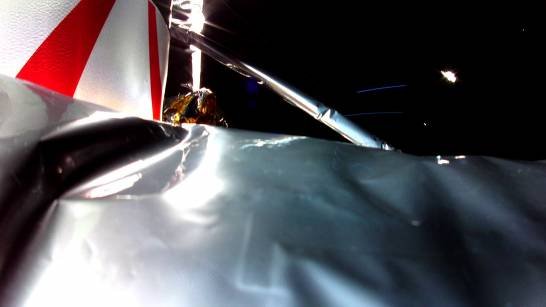The module pilgrimwhich set off for the moon this Monday after more than 50 years since the last US lunar landing, only has fuel for less than two days, meaning it will not be able to reach its planned February 23 destination, according to the company. Astrobotic responsible for the ship.
The Peregrine One Mission (PM1) was successfully launched with the new and powerful United Launch Alliance (ULA) Vulcan Centaur rocket from Cape Canaveral Space Force Station in Florida (USA), but began losing power after a few hours.

Launch of the Peregrine spacecraft aboard the new Vulcan rocket. / EFE/EPA/CRISTOBAL HERRERA-ULASHKEVICH
Although the engineers had succeeded Realign panels As they moved the power module toward the sun and were able to communicate with the ship again, they “showed a critical loss of fuel,” Astrobotic said in an update on the mission.
“If the engines can continue to function, we believe the spacecraft could remain in a stable orientation state for a while approx. 40 hours “more dependent on current fuel consumption,” explained the company based in Pittsburgh, Pennsylvania.
Given the new panorama, Astrobotic said the goal now is to get the Peregrine module “as close as possible” to the moon before it loses power.
An incomplete journey
The module had a 46-day journey to reach the lunar surface and become the first American spacecraft to land on the moon since 1972.
Peregrine carries NASA scientific instruments to study the Moon as part of its Commercial Lunar Payload Services (CLPS) initiative Lunar exosphere (the outer layer), the thermal properties of the Lunar regolith (the layer of loose material resting on solid rock), the Hydrogen wealth on the ground of the landing site and monitoring the radiation environment.
The Investigative missions, one of them Mexicanwill also help better understand the planet's processes and evolution, search for evidence of the existence of water and other resources, and support long-term, sustainable human exploration.
In this sense, NASA assured this Monday that, despite the “setback” of the lunar module, it has “more tools to explore space”.
NASA Administrator Bill Nelson, took to social media to highlight the “success” of the new Vulcan Centaur rocket this week. He added that Astrobotic is “advancing” deliveries under the CLPS initiative and the Artemis lunar return program.
Astrobotic is working with the US space agency “to determine the impact of the agency's five scientific studies aboard the Peregrine spacecraft.”
The Peregrine module also carried one Rock fragment from Mount Everestand that Ash and DNA from space enthusiasts like the creator of Star TrekGene Roddenberry.

